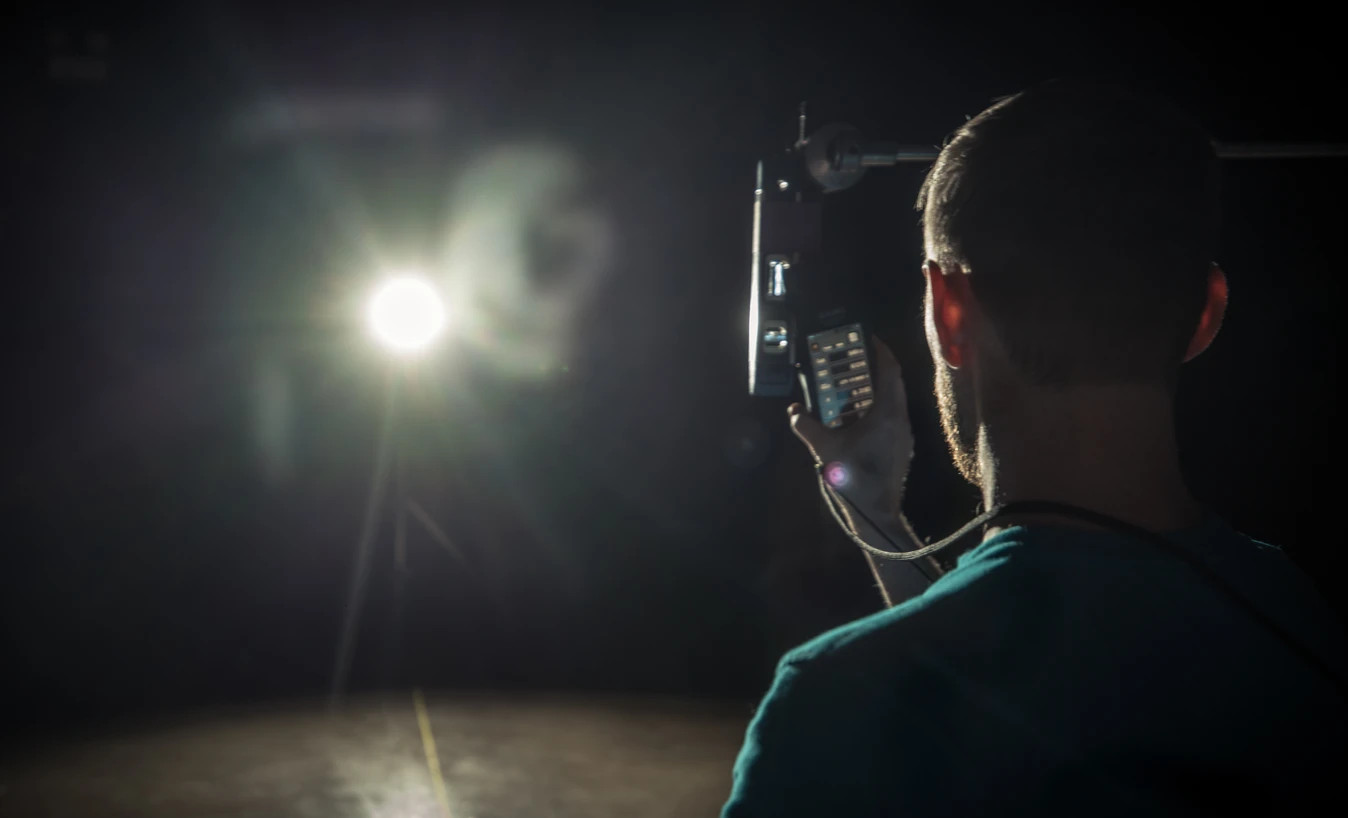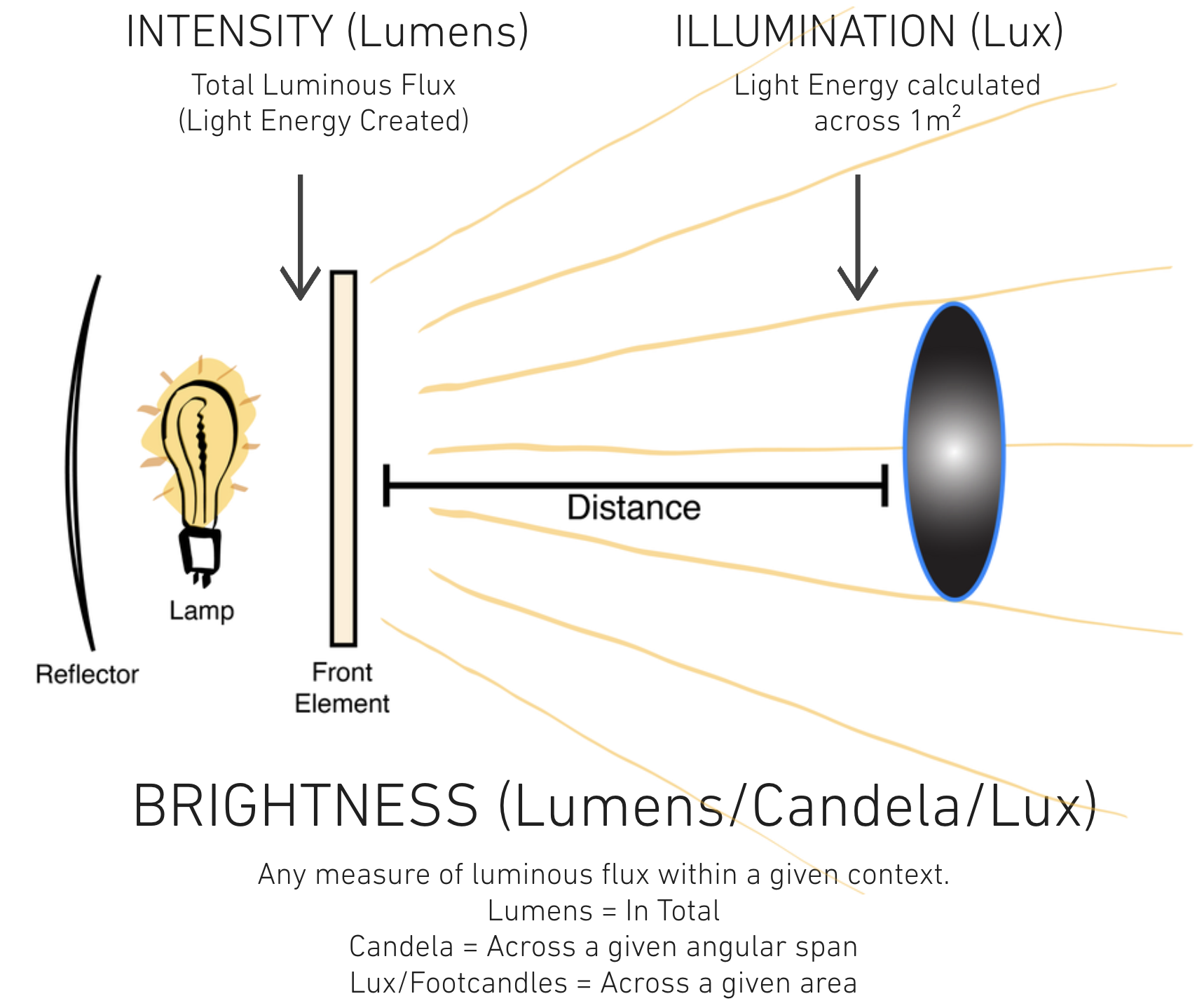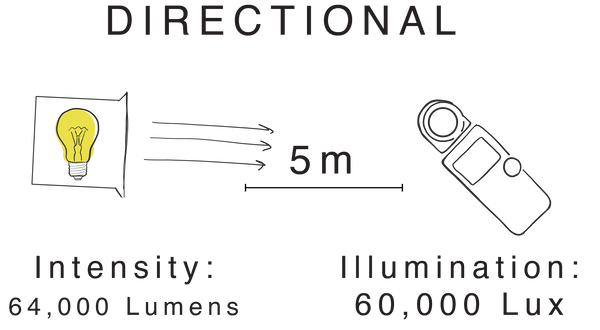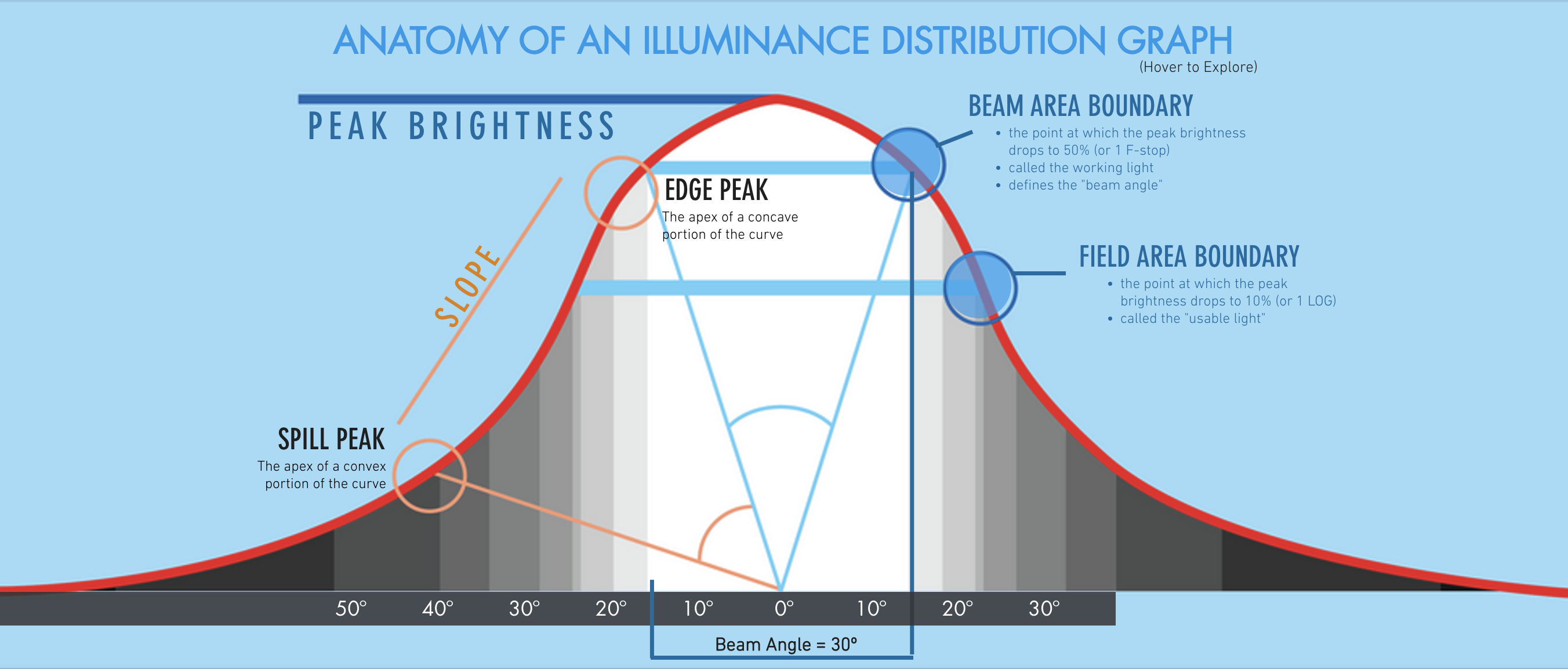Placing a light 5m from a measurement plane, we gathered 15 separate, angle-targeted readings from the center of the beam down the plane to the right along the horizontal axis. While a more comprehensive test would include the vertical axis as well, most of the light fixtures had circular front elements, meaning that their beam spread should be relatively similar along both the horizontal and vertical axes. It is important to note that these curves do not apply to the vertical distribution of illuminance on fixtures with square and rectangular front elements, only to their horizontal distribution.
Manufacturers measure with candelas because this makes calculating the output at any distance easier. However, this method is only concerned with measuring a small area of the beam. While useful for calculation purposes, candelas prove to be useless on-set. Instead, brightness is measured by illuminance over an area and is this is what our incident light meters are measuring and approximating. Therefore, while it adds another variable into calculations, we felt that it was important to present results based on illuminance, in Lux. This of course requires a constant distance at which to take all measurements. We measured all sources at a 5 meters planar distance because at this distance, the falloff rates for the lights tested have roughly evened out to give a more equitable representation of intensities. Increasing the distance beyond 5 meters would have introduced spill and ambient bounce, skewing the readings.
Additionally, while the x-axis of all distribution graphs always denotes the angle from center beam, manufacturers measure take their angle measurements isometrically (at an equal distance from the center of the light), however, we choose to measure along a planar surface. Planar measurements yield the most practical results for usage in our industry (shooting through diffusion, bouncing, washing cyc walls, etc). This meant that not only did the angle change with each measurement, but the overall distance from the source did as well. This has clear effects on fixtures with specified beam angles. For instance, a 19º Leko lens measures half of its peak brightness at 13º when measured along a plane. This adds more work by our calculator to determine beam spread, but is much more useful for how the motion picture industry uses lights.






